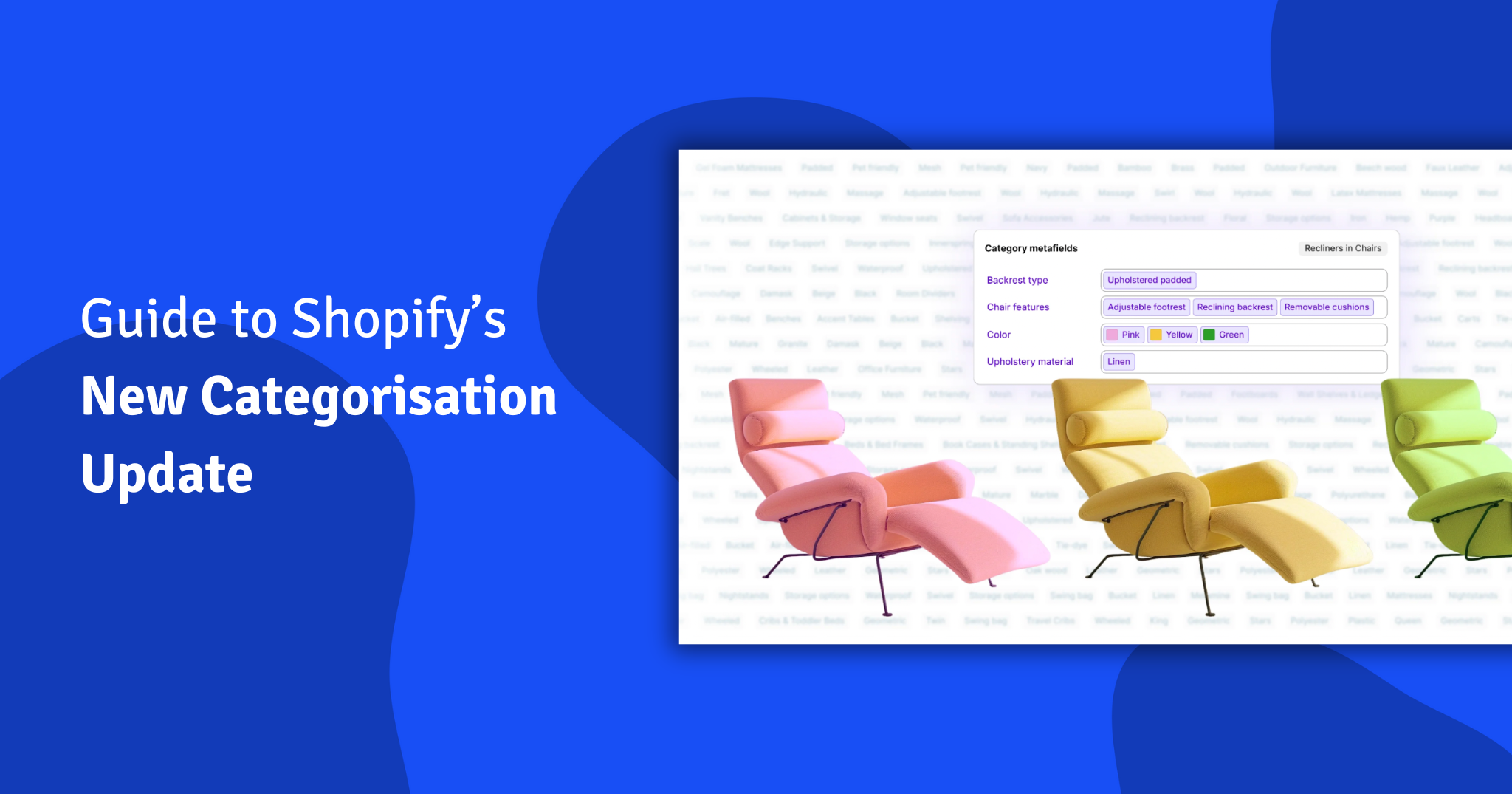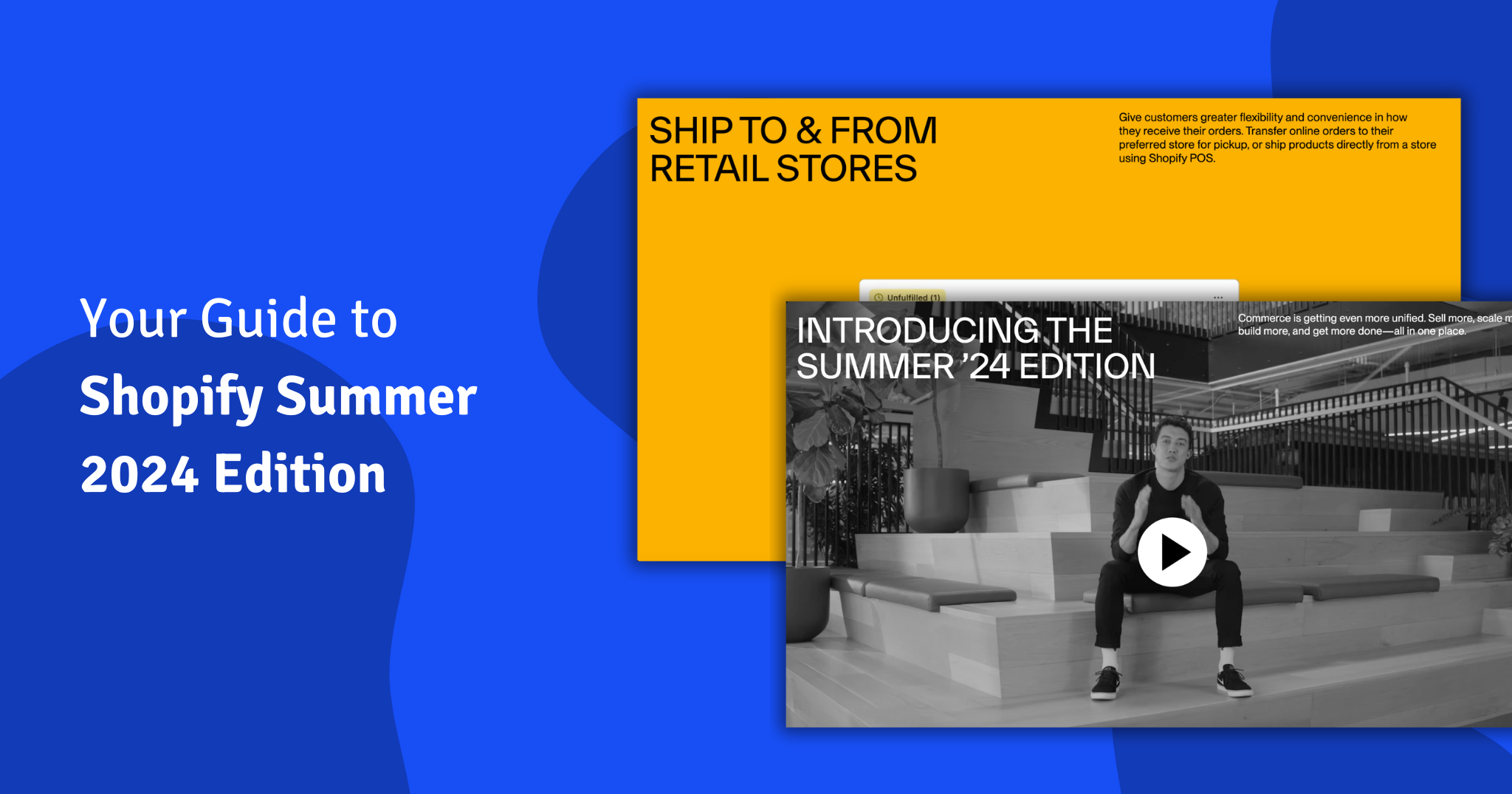While we don’t want to say goodbye to the summertime too quickly, it’s important to be ready for the changing seasons ahead—and the new marketing challenges they bring.
At this time of year, in particular, you may begin to notice shoe stores filling with children marching about in awkward lines wearing black, patent leather buckle-ups, or the seasonal aisle in the supermarket stocking up on notebooks, pens, and pencil cases.
That’s right: it’s back-to-school time.
Many Shopify store owners also will start to see an uptick in searches around specific products—such as those aforementioned shoes and pencil cases—and it’s in your business’ best interest to meet your audience at their place of need.
In this article, we’re looking at how to market your online store for back-to-school shopping, so read on to find out how you can do just that: a
Change up your imagery
It may seem obvious, but many stores don’t adjust their landing page imagery throughout the year. Sometimes, this is great—consistency is key when it comes to branding, after all—but you may also be missing out on important sales. After all, according to BloggingWizard, on average, people retain 55% more information when it is paired with an image.
For instance, you could adjust a carousel banner to include a back-to-school advertisement, linking to a collection featuring a range of relevant products. You may also change over one of your other images to better showcase a product that might be of particular interest at this time of the year, like a photograph of a new leather satchel, or a learning software subscription.
Stationary and book supplier WHSmith is a great example of this, with their prominently displayed back-to-school promotion banner.
Create collections
This WHSmith banner also leads to a page listing the products included in this particular deal, seamlessly leading customers from their landing page prompt to the products they need.
You can do this, too, with Shopify collections. Collections are simply products you have grouped together for any reason at all, from sale items to bestsellers.
Collections can be automated or manually curated. For automated collections, you can choose up to 60 selection conditions and can be useful if your collection regularly changes or expands. Manually created collections, however, are stationary and you will need to individually add and remove products as your collection changes.
For example, you can see that healthcare and beauty retailer Superdrug has created a page especially for back-to-school products, where customers can check out all relevant items at once, including hair accessories, multivitamin chews, and—unfortunately—head lice treatments.
Top tip: You can also see what your audience has been searching lately to get a further idea of what kinds of products or collections you may want to bring to your Shopify storefront. This can be done by visiting your top online store searches report, which will show you not only the search terms used on your store by customers, but the number of these searches as well.
Bundle options
This time of year can also be a great opportunity to offer bundles of products, as many parents and students are all buying variations of the same school supplies. This can also be a great way to complete sales for those particularly time-pressed parents.
Take a look at Smiggle for an example of this. They have a page for School Bundles which includes product groups of matching bags, lunch boxes, water bottles and pencil cases—oftentimes at a reduced price compared to buying each item individually.
Similarly, Argos offers 2-pack bundles on school uniforms—another simple, easy bundle idea which shows the brand understands their customers.
When it comes to building bundles Shopify, it’s as simple as downloading the Shopify Bundles app. This app is free to install and use across all Shopify plans, and you can get started creating fixed and multipack bundles directly from your Shopify admin. It offers features such as:
- Customers can choose from options like size or colour for products in the bundle.
- Customise your bundle product page with images, variants, and product options.
- Inventory is updated in real-time, so you’re protected from overselling.
Sales, sales, sales
Many parents and students will find this time of year to be particularly hard on their bank accounts, so where possible, appeal to them by way of savings. Take a look at Vans sale in our screenshot as an example of how you might implement this effectively:
With Shopify, to offer discounts, you can create discount codes, set up automatic discounts, or set sale prices for individual products.
When you create a new discount code, it appears on the Discounts page in your Shopify admin. To distribute this discount code, you can send the code to your customers by email, or display it on your online store. Your customers need to enter the code during checkout to receive the discount.
At our agency, we like to use Klaviyo integration in order to send our discount codes. Klaviyo allows users to create coupon codes and send them to subscribers, customers with abandoned carts, and other audiences—similarly to Shopify. However, Klaviyo is superior in that it creates dynamic codes, meaning that each discount code is uniquely generated for each customer, and can only be used once. This is great for you, as a Shopify store owner, because it means that customers can’t use the same code over and over again or upload it online for others to use.
An example of how this might look is with our client Happy Pets NI:
You can also simply discount individual items, as well as show the old, “full” price. This is called the compare at price and allows customers to immediately understand the savings they are making on a discounted item. You can see here, on athletic gear retailer Nike’s website, has a special collection for their kids’ trainers sale items, and each of them showcases both the original price and the new, discounted sales price.
Targeted spending
You should also utilise paid advertising to make the most of your other marketing efforts. When it comes to these ads—whether you use Meta, Google, or some other platform—make sure that you are choosing a well-defined targeted audience. Broad, catch-all targeting can be useful in some cases, but when it comes to events like going back to school, you will want to make sure you are only paying to reach people who are either sending their children to school, or going to school themselves.
With the majority of platforms, you can typically target parents—as in the screenshot example we’ve included—and also those who are employed as full-time students or with interests in third-level education. You may also consider running multiple ads for different ages and needs, and keeping your targeting more specific.
Abandoned Cart reminders
Sometimes your customers can stop short of completing their purchase—after all, in the case of back-to-school time, your customers will likely be busy parents. In these cases, it’s a good idea to check in about whether they are still interested in the product. This is also in the best interest of your business, as seasonal products such as school bags have a much more limited window of interest.
Emailing a customer about their forgotten items can be set up through Shopify.
- From your Shopify admin, go to Settings > Checkout.
- In the Abandoned checkouts section, check Automatically send abandoned checkout emails.
- Under Send to, choose who you want to send a checkout recovery email to:
- Anyone who abandons a checkout
- Email subscribers who abandon a checkout
- Under Send after, select the number of hours that Shopify should wait before sending the abandoned checkout email.
- Click Save
Top tip: You can also set this up in Klaviyo. If you do this, however, remember to turn off any automatic abandoned checkout emails in Shopify admin, so that you don’t have duplicate emails sending to customers.
An example of how an email like this might look is this message from Emma Bridgewater. It’s a simple email which includes the left behind product, and a clear link to return to the checkout process, too.
Conclusion
The month of August is a busy one for those heading back to school come 1st September. Be sure to make your products as easy to find and your website as easy to use as possible in order to maximise your sales.
If you want to get in touch with us to discuss your marketing needs or having us build a Shopify store for you, please reach out via our website.
We also send out tips and tricks in our newsletter Shopify Insider. Sign up to that here so that you don’t miss out on any more expertise in achieving higher conversions.


